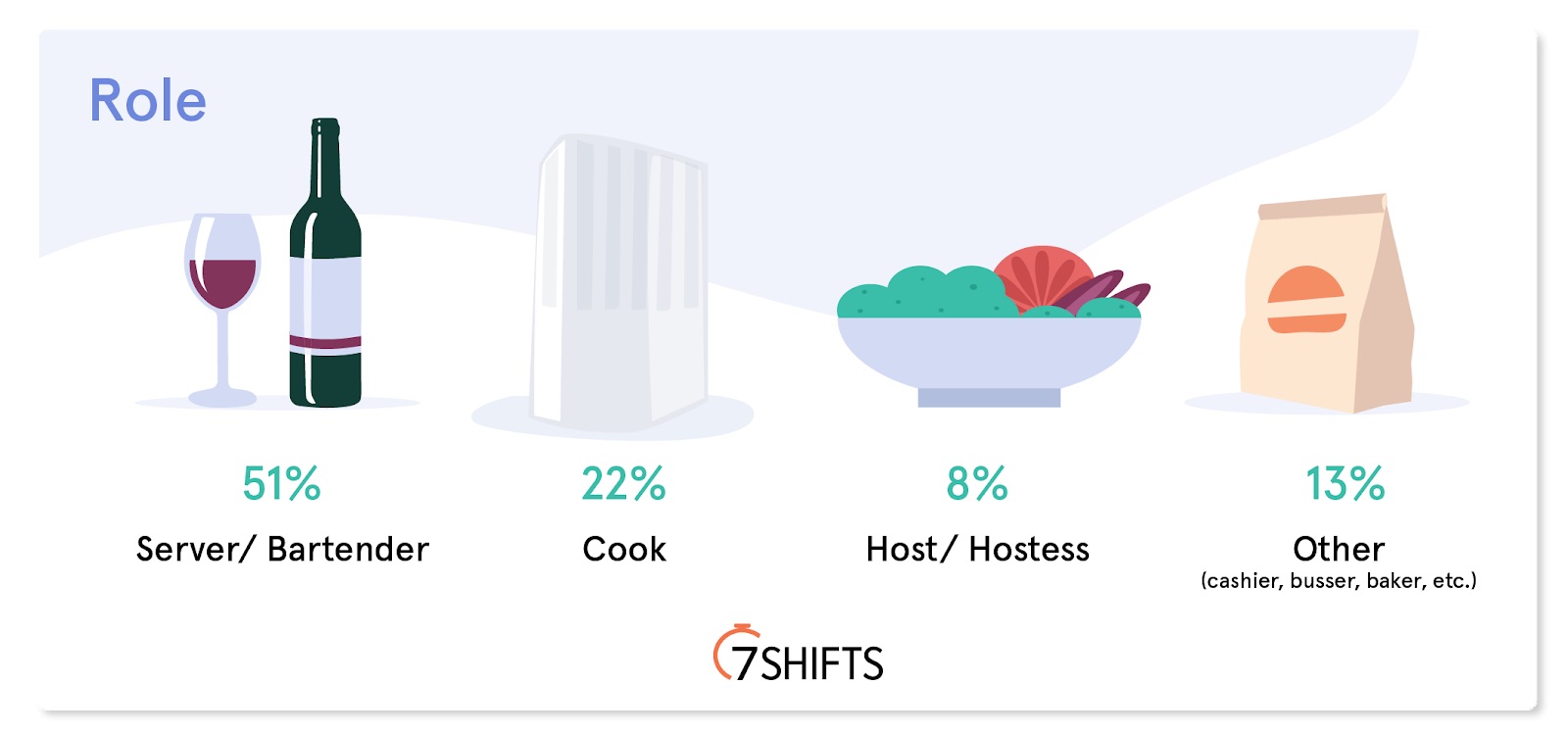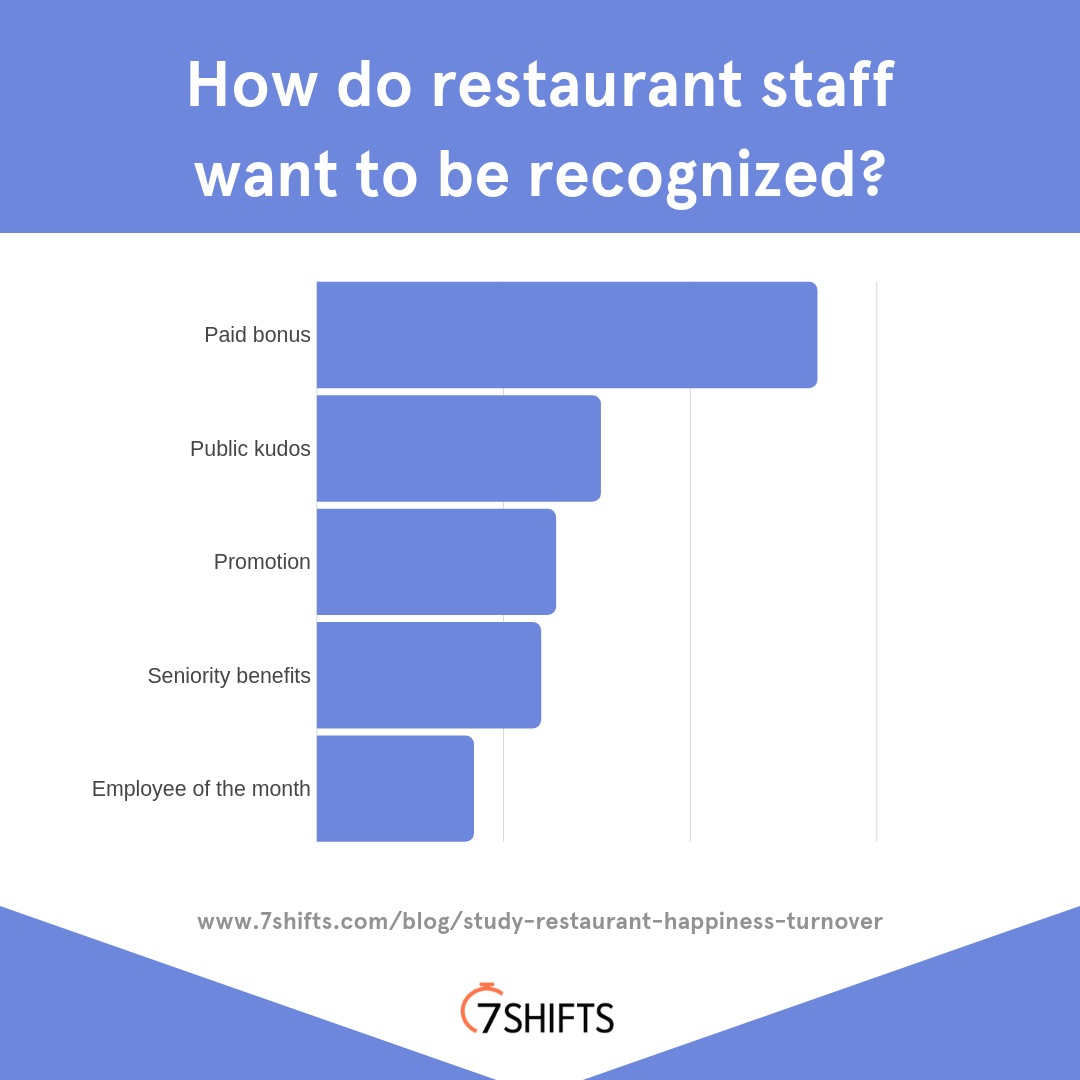
If someone were to sit your restaurant staff down right now and ask them if they were happy under your employment, what would they say? Are you confident their response would be in your favor? Or is restaurant turnover becoming a growing problem in your business?
Answering these types of questions should be easy for a manager.
In order to run a restaurant, anyone hired to fill a managerial position should have just as much care and concern for their team as they do the patrons, processes and end product.
And yet, employee satisfaction is one of the easiest aspects to lose sight of in a restaurant business. In the chaos of everyday operations, focus is diverted elsewhere with even the best of intentions likely to fall by the wayside.
In January 2021, the U.S. Bureau of Labor Statistics reported that the turnover rate for the hospitality industry rose to 131% in 2020, up from 79% in 2019. While this rise in restaurant employee turnover has a lot to do with the COVID-19 pandemic, the hospitality industry has historically had much higher turnover rates than other sectors.
But high turnover does not have to be your restaurant’s status quo.
Every employee—from dishwasher to server—can find joy in what they do (and remain loyal because of it) with the right foundation for support in place.
Follow these best practices to boost employee satisfaction and eliminate turnover:
- Get to know your employees
- Invest in your staff for the long term
- Make room for smart restaurant technology
- Communicate often with feedback and positive reinforcement
- Adopt greater schedule flexibility
How to boost employee satisfaction and eliminate restaurant employee turnover
You’ll hear the word culture thrown around a lot in reference to employee satisfaction. Build a team from shared motivators and company values and the work will speak for itself.
It sounds easy enough, right?
The culture of your working environment, however, is more than a mission statement typed out on the first page of your restaurant employee handbook. You have to walk the walk.
For the sake of boosting satisfaction and eliminating restaurant turnover, this means delivering on the things employees are actually looking for when it comes to being engaged in their jobs.
Get to know your employees
The first thing many point to when brainstorming ideas that’ll decrease turnover is money. While a pay increase may go a long way for some, it’s not the only indicator you should be using in gauging your team’s happiness.
As one survey respondent from this 7shift’s workplace engagement study shared, “While the pay is simply alright, I was willing to trade more money per hour for a more fast-paced and positive work environment. It helps that there are some per-shift perks like free drinks and food and other discounts. Flexibility is key.”
The bottom line here? Every employee is different. The first thing every manager needs to do is understand employees and their struggles. While some might want a pay increase, others might want flexibility—or perhaps they might be better suited for a different role. You’ll have a better idea of what needs to be done by listening to your employees and their needs.
Your employees are not robots.
They feel. They have goals. Their happiness is far more complex than a bonus check. That said, offering a living wage is important—especially for employees who don’t regularly benefit from tips.
When you’re mapping out processes and schedules, there’s a clear role every employee has to play in ensuring daily operations run smoothly.

Image source: 7shifts Restaurant Employee Engagement Survey
But off-paper, these same employees are so much more than the job responsibilities they fulfill.
As you start to think through the ways in which you decrease restaurant employee turnover, look beyond the numbers.
Get to know your people: ask questions, share the passion you have for your business and gauge what brings them joy from the work they do. In doing so, you’ll find that there are so many contributing factors at play in motivating and building a team that truly enjoys working together.
Invest in your staff for the long term
Tell someone to invest time and money into employees and their devil’s advocate side will ask: but what if they leave?
For the most part, employees leaving is not a question of ‘if’ but ‘when’. The average person today will hold 11 jobs between the ages of 18 and 48.
People are going to quit.
The question that should be asked in this situation is: what do you have to lose by not investing in someone?
The true cost of not providing ongoing training, of not providing opportunities for your staff to advance in position, far outweighs the cost to do so. In fact, the cost of restaurant employee turnover can be as high as $2,000 per employee! Not a number you can easily ignore.
One way to keep employees from leaving? Career advancement opportunities. 60% of workers feel that a promotion would markedly increase their workplace happiness. Employees want to stick around. It’s much easier to stay where you are than start back at square one—learning new menus, operating systems and team processes.
Training is not just an investment in employee knowledge, but also their well being. This is key when it comes to maintaining a safe workplace, especially in a restaurant with all sorts of sharp objects and boiling pots. You’ll help your employees stay safe and provide a better working environment that they’ll feel comfortable in by properly educating them on processes and equipment.
Make room for smart restaurant technology
Poor workplace technology is regularly cited by employees as one of the worst parts of working in the restaurant industry. A pen, paper and/or buggy cash register makes no one’s job easier.
Not only that, but outdated systems can end up costing you in the areas of time, money and employee productivity. To improve your restaurant’s overall efficiency and make your employees more productive, it’s important to update your technology. Think of restaurant scheduling apps and time clocking software as a short term investment with long term rewards.
A key part of updating your restaurant technology starts by adding a point of sale (POS). With a point of sale such as Lightspeed POS, your employees will be able to easily communicate between front and back of house, while at the same time quickly assign tables and provide faster turnaround for customers. Providing your employees with proper tools from a POS to efficient scheduling systems will make sure they feel they have the necessary equipment to do their job properly.
The success of your employees and business are heavily intertwined. Be proactive about equipping them with the tools they need to succeed and it’ll begin to translate into other areas of your restaurant operations as well.
Related Read: How to Improve Restaurant Efficiency
Communicate often with feedback and positive reinforcement
Team communication in the restaurant industry means more than activating a phone tree when someone’s called off shift. To properly build a team with your employees, you need to offer them streamlined methods for staying connected outside of work.
In terms of how employees prefer to communicate with their managers, 60% of employees would rather text or use 7shifts chat (when not in person). This is in comparison to phone calls, emails and social media messaging.
Setting expectations around open, consistent and honest communication paves the way for very real feedback. You should be able to count on your employees to call things out when they’re not working and offer up solutions for problems in need of fixing.
This level of feedback should also come from you, as a manager. When you’re regularly providing both insights into how staff could better perform in their roles and positive reinforcement for a job well done, you show ongoing care and commitment for their efforts.

Image source: 7shifts Restaurant Employee Engagement Survey
Related Read: What Do Diners Look For In A Restaurant Experience?
Adopt greater schedule flexibility
When you think about your staff as people, you begin to see beyond the apron. They’re students, artists and aspiring chefs.
The work they’re doing for you is usually a means to a greater goal. So stay conscious of that as it relates to building shift schedules.
You may not be able to bend over backwards for every single request, but consider building in PTO as one of your restaurant staff incentives. Show that you care about the life they have outside of work as you set the stage for that same level of courtesy to be returned.
Final thoughts: Engaging your staff to eliminate restaurant employee turnover
Restaurant employee turnover is inevitable, but it doesn’t have to be constant. You can mitigate the comings and goings by engaging your staff with actions that show you’re committed to the future they have with your restaurant.
Action on your part—in the form of incentives, smart technology and thoughtful feedback—will always go farther than a rotating door of false promises.
By listening to your employees and helping them grow within your restaurant you’ll be one your way to reducing your restaurant turnover.

News you care about. Tips you can use.
Everything your business needs to grow, delivered straight to your inbox.



